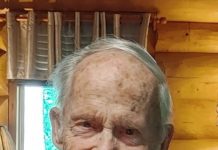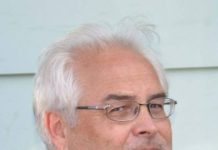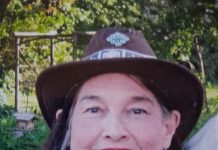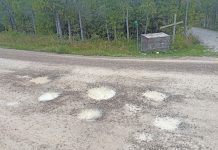By John Francis,
Bruce Peninsula Press
An OPP Press Release issued on August 15 stated that:
The Grey Bruce Ontario Provincial Police (OPP) are currently investigating under the direction of the Office of the Chief Coroner and the Ontario Forensic Pathology Service (OFPS), the discovery of human remains found in a remote area of the Bruce Peninsula.
On Thursday, August 14, 2025, police were notified after remains were located by archaeologists working in the area. Officers attended the scene and consulted with forensic experts, including the Office of the Chief Coroner and a forensic anthropologist. Following this consultation, forensic specialists attended the scene on August 15, 2025, to conduct a detailed examination.
The remains have since been collected and transported for further analysis. The case has been deemed a coroner’s investigation and remains ongoing under the direction of the Office of the Chief Coroner and the Ontario Forensic Pathology Service (OFPS), with support from the Grey Bruce OPP Crime Unit.
A coordinated search of the surrounding area was conducted by the OPP Emergency Response Team, with no additional remains located.
The “remote area of the Bruce Peninsula” turns out to be quite close to Tobermory.
The Bruce Trail Conservancy has agreed to purchase 28 acres of forest from David Almack, to preserve and guarantee the optimum route of the trail. The property is immediately south and west of the Dunks Bay Cemetery. It includes the woodlot between Centennial Drive and Almack Beach Laneway, adjacent to St Edmunds Public School — where generations of Tobermory children have spent many “outdoor classroom” hours learning about nature and forests.
David Almack picks up the story from there. The land transfer to the Bruce Trail Conservancy involves a change of use in the Zoning Bylaw, which requires an archaeological study of the property. This is important because the Dunks Bay area was a traditional First Nations campsite (or a village?).
The archaeologist was exploring the rugged terrain carefully, looking for indications of traditional use, when she happened to glance into a crevice in the rock. She was shocked to recognize a human skull in the crevice.
The initial discovery, David says, was a skull, a jawbone and one long bone from an arm or leg. At that point, the researchers alerted both the OPP and Saugeen First Nation. It was not clear at that point whether the human remains were recent or historical.
The OPP blocked off the area for Thursday and Friday, including the Bruce Trail, but it was reopened in time for the weekend.
David is not sure whether further remains were found, or whether the remains were considered to be recent or historic — only that they were old enough that a cadaver dog was deemed unnecessary. He has the impression that investigators were leaning towards European origin as opposed to First Nations but “it’s all speculation at this point”.
The location could support either story line, David notes — a traditional burial of some description or a more recent disposal of a body. The location is rugged, but is only about 75 metres from the nearest road and only about 25 metres off the Bruce Trail.
The OPP are expected to offer more information when the forensic study is complete.















